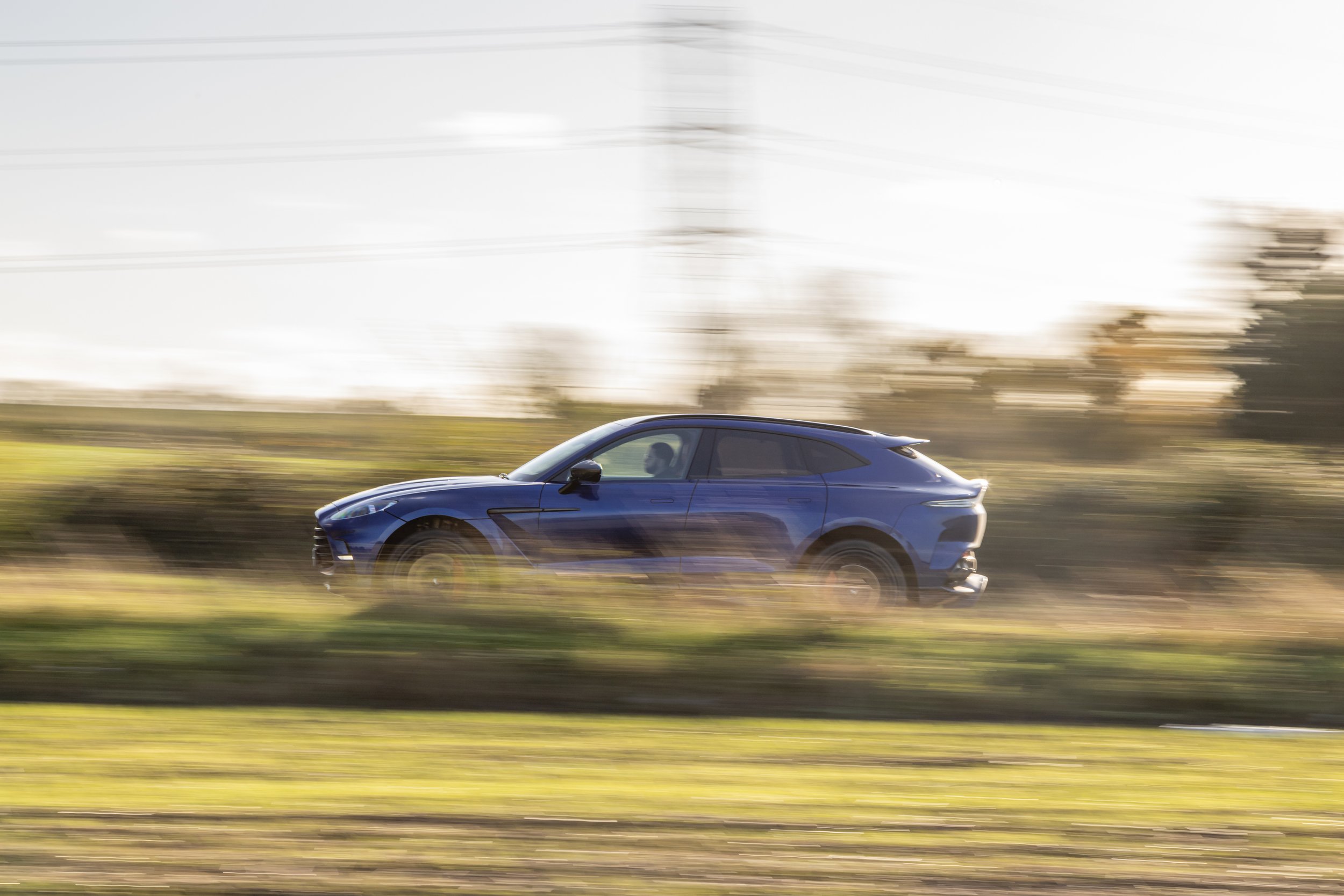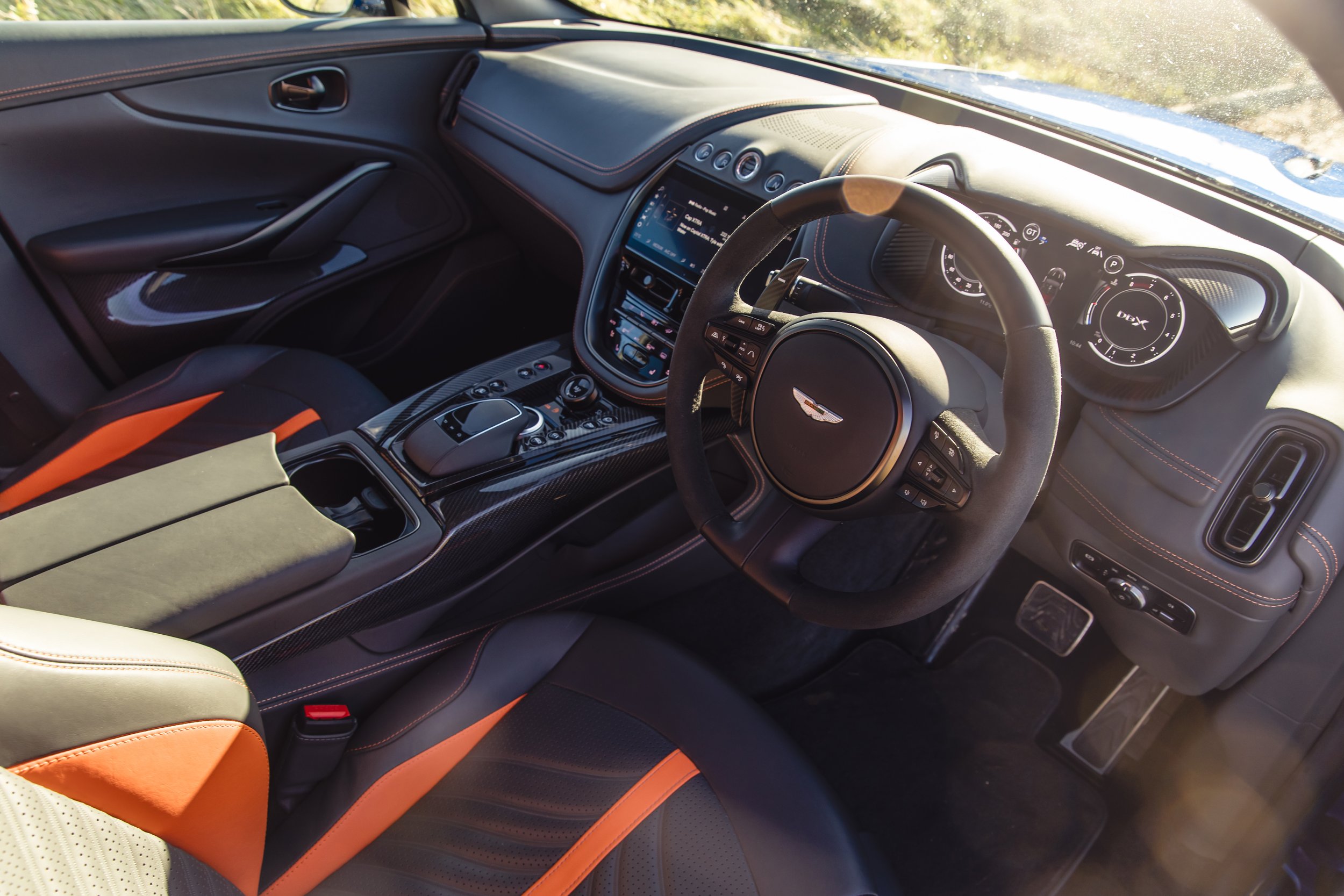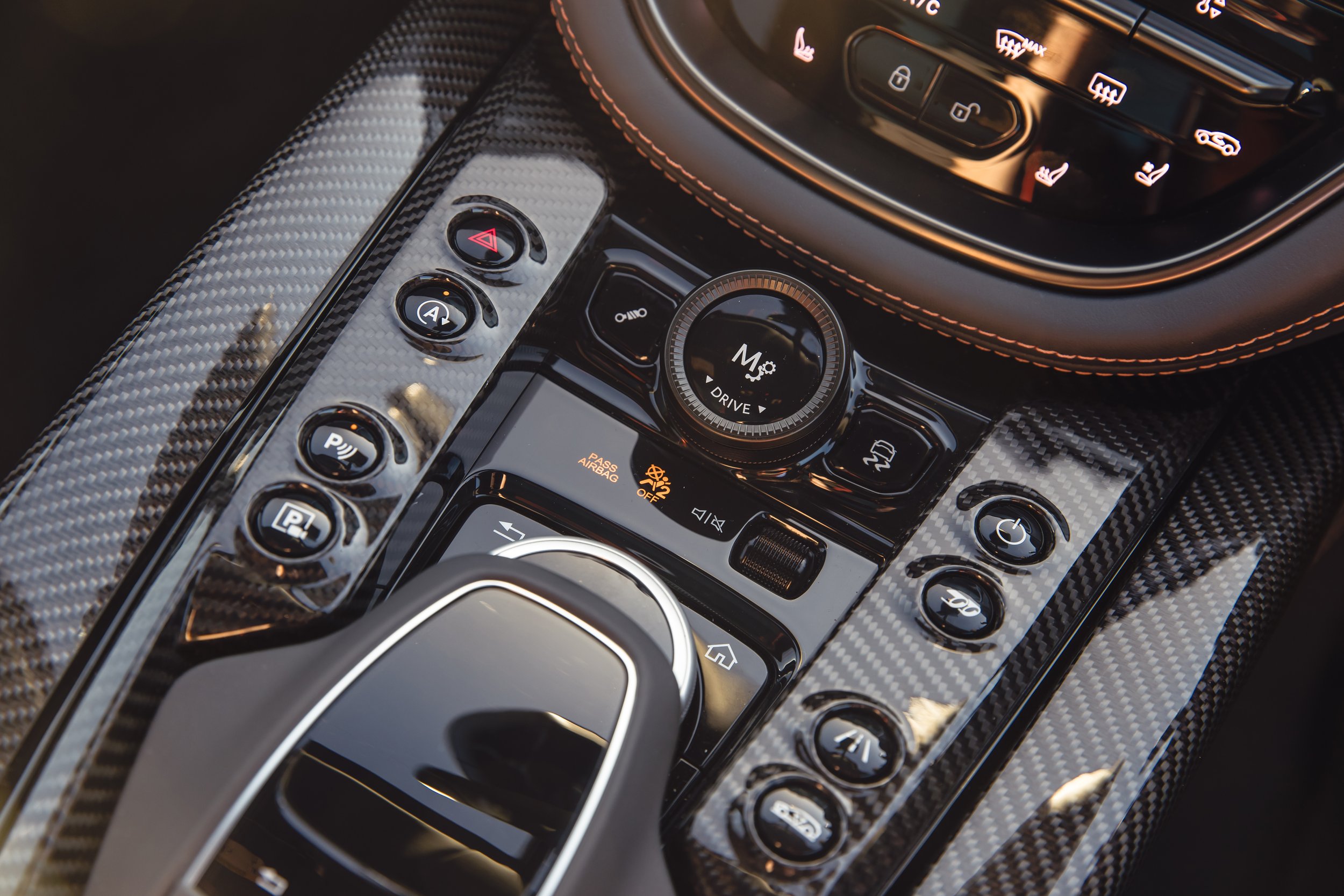
Road Test: Aston Martin DBX707
Aston Martin’s SUV has been down the gym in search of serious gains. The result is the DBX707, but is it wild enough to take on the competition?
WORDS: Mark Rose | PHOTOS: Dom Ginn
The arrival of my Aston Martin DBX707 press loan was rather timely. A couple of months prior, I spent five days with a Lamborghini Urus Performante, a vehicle which I concluded was as bombastic as a car could get. And so, with the Lambo still relatively fresh in my mind, it made for a reliable benchmark to judge the Aston against. Regular readers will know that unlike some motoring journalists, I have a particular soft spot for Super SUVs and the way they bend the seemingly unyielding laws of physics. I’d go as far as saying I would buy one for a daily driver, and yes, you can call me tasteless if you so wish, but I don’t care because these things are a riot and the DBX707 might just be the most laugh-out-loud of the lot.
For starters, just look at it: the gigantic grille could devour a Ford Fiesta, the rear diffuser looks like it’s been taken wholesale from a GT4 racing car, the 23-inch wheels are unnecessarily large, and the exterior adorns more carbon fibre than a hip-hop artist does diamond jewellery. Then there’s the performance which is arguably even more ludicrous. The AMG-sourced 4.0 litre twin-turbo V8 makes 697bhp at 6,000rpm and 663lb ft. and fun fact, the turbos are the same as those found on Merc’s weapons grade AMG GT Black Series. This is an Aston Martin that’s been well and truly let off the leash, which is a rare thing indeed.
So, what does all of that power feel like in a car with a kerbweight of 2,245kg and the physical proportions of a small house? Wonderfully alarming, and I know that sounds like a paradox but hear me out. Accelerating from zero to 62mph in just 3.3 seconds in such a large and heavy car does feel unnerving. You’re acutely aware of the forces at play and what could happen if it all goes wrong, but life would be boring if it weren’t for some trepidation and happily, this is the balance the 707 strikes. It’s a potent machine, not just for an SUV but for any performance vehicle, and if you happen to live near the Autobahn, you’ll be able to test your nerve all the way to 193mph, if you so desire.


Before I get on to how it fairs across a country road, it’s worth highlighting how the 707 differs from the standard car. Remember, Aston Martin is now racing in Formula One, so slapping some beefy bodywork and an extra 155bhp on a run-of-the-mill DBX simply isn’t going to cut it, not on Lawrence Stroll’s luxury watch.
Aside from the power bump, there’s recalibrated fuel mapping and a new exhaust, as well as a new e-differential that can send up to 100 per cent of the available torque to the rear wheels. Performance is distributed via a new nine-speed wet clutch transmission with a shorter final drive for more intense acceleration. The three-chamber air suspension has been revised to increase body control with top mounts which are now 55 per cent stiffer. There’s also been changes to the electronic active roll control system and the body is 9 per cent stiffer, which again helps dial out chassis roll. As for the steering – something that’s an unexpected highlight of the package – it’s also been fettled with in pursuit of improved feel. The carbon ceramic brakes measure 420mm up front and 390mm at the rear and bring a 40.5kg reduction in unsprung mass, and those huge wheels are wrapped in 285 and 325 section Pirelli P Zero tyres. Finally, the bigger grille brings improvements in cooling and the rear lip spoiler helps reduce lift which aids high speed stability.
All of these changes wouldn’t look out of place on one of Aston’s GT cars, so to see that they’ve thrown the kitchen sink at making the DBX707 as fast and engaging as possible is proof of their commitment. The result is a car that possesses the handling characteristics of a super saloon rather than a fast SUV. You arrive at a corner expecting the chassis to roll and the steering to offer little sense of where the front wheels are, only to exit the turn while gawping at how composed the body control is and how connected you feel to the front of the car. The 707 feels agile, surefooted and keyed in to the road surface, but not so hunkered down that it comes across as unplayful.


In its Sport+ driving mode, you can feel the car sending torque to the rear wheels which makes it genuinely adjustable on the throttle. Make no mistake, this is an SUV that will drift. One damp evening I was enjoying a spirited drive home when the DBX decided to attempt a swapper on me when I got over zealous with the throttle pedal, mid corner. This is one of the joys of the big Aston: it will decimate a B-road and cover ground at an astonishing pace, but also offer up the type of hoonery that’s usually the preserve of rear-wheel drive sports cars.
Fortunately, the 707 doesn’t trade ride quality for dynamic ability, a trait the Urus Performante suffers from. It does feel increasingly rigid as you cycle through the driving modes, but never does it feel crashy or uncomfortable, and there’s an Individual driving mode if you want to fine tune things to your liking. The only downside is that wider track and massive tyres causes the car to follow road cambers which can be frustrating when you just want to plod along at a leisurely pace. The wet clutch transmission also isn’t the sharpest instrument – a dual-clutch offers faster gearshifts – but its miles quicker than a torque converter while being just as smooth, and is better suited to the 707’s luxury-performance SUV brief. Another trait you don’t normally associate with SUVs is braking feel, but the DBX has it in spades and even though it weighs more than 2.2 tonnes, it stops with real urgency when required.
As dynamically competent as the DBX707 may be, arguably its biggest party trick is how good a luxury SUV it is. Given the focus on performance and handling, Aston Martin could have been forgiven for compromising on refinement, but that’s not the case. I went on some long journeys in the car and never once did it feel anything other than a consummate long distance cruiser. The suspension was supple, the cabin was well insulated from wind and road noise, and the V8 that roars its way to the rev limiter in Sport+ became softly spoken in GT mode. And while traveling on motorways, the huge reserve of torque means you have performance to spare at any given time. The very idea of 70mph seemed like an insult to a car that’s been built to do big speed for extended periods of time in an effortless manner. It feels like a grand tourer, and the only things that remind you that you’re in an SUV are the lofty view out and overall practicality of the vehicle.


Adding to the GT car vibes is the interior which, despite some carbon trim, errs more towards luxury than sporting. You climb aboard to be greeted by the smell of leather which is the cabin’s dominant material, the steering wheel is trimmed in Alcantara for a more tactile feel, and everything you interactive with has a feeling of quality to it. It’s certainly plusher than an Urus but still trails a Bentley Bentayga which is a step above in terms of quality while offering more visual bling. Interior highlights include the vast panoramic sunroof, the well judged driving position, and the large driving mode selector. It’s without question a wonderful and relaxing place to cover huge distances from.
But it’s not an interior without its foibles and if we’re to pull up Lamborghini on using Audi switch gear in the Urus, then we should be levelling the same criticism at Aston Martin for raiding the Mercedes-Benz parts bin for the DBX. Anyone who has spent time in Mercs will recognise the re-skinned infotainment system, indicator stalk, buttons, and click wheel for the main screen which, surprisingly, forgoes touch sensitivity. Presumably, when the DBX gets a proper update, the interior hardware and tech will be first on the list of changes, but for now we have to make do with hand-me-down Mercedes. On a positive note, everything is beautifully presented and put together properly, and I do question why we need elaborate infotainment systems when Apple CarPlay exists, but that’s a talking point for another article.
I’ll admit to being quite taken by the DBX707. Yes, I’m a sucker for these fast SUVs, but the Aston really got under my skin during my time with it. Objectively, it’s a fantastic car with few downsides, although with an OTR price of £208,500 you do expect it to be rather good irrespective of whether this segment appeals to you or not. It somehow manages to combine the dynamic prowess of a Lamborghini Urus Performante with the refinement of a Bentley Bentayga, while taking on a personality all of its own. This is no mean feat, particularly for a company that prior to the Stroll takeover was struggling to convince people to buy cars. Aston Martin has come a long way since Lawrence and his conglomerate took charge, and the DBX707, along with the new DB12, are evidence that they’re getting back to their best. If you’re a car enthusiast, then this is as good a reason as any to celebrate.
Note: The DBX707 has since received an update and is now the only DBX model available to buy from new.
Engine: V8, twin-turbo
Displacement: 3,982cc
Power: 697bhp @ 6,000rpm
Torque: 663lb ft @ 4,500rpm
Transmission: 9-speed auto, AWD
0-62mph: 3.3 secs
VMAX: 193mph
Kerbweight: 2,245kg
Price: £208,500+
Technical Specifications
If you weren’t sitting so high off the ground you would think you were driving one of Aston’s GT cars. The DBX707 is a masterclass in engineering and an enjoyable Super SUV.
9/10
Verdict & Rating
“Aston Martin has thrown the kitchen sink at making the DBX707 as fast and engaging as possible”


